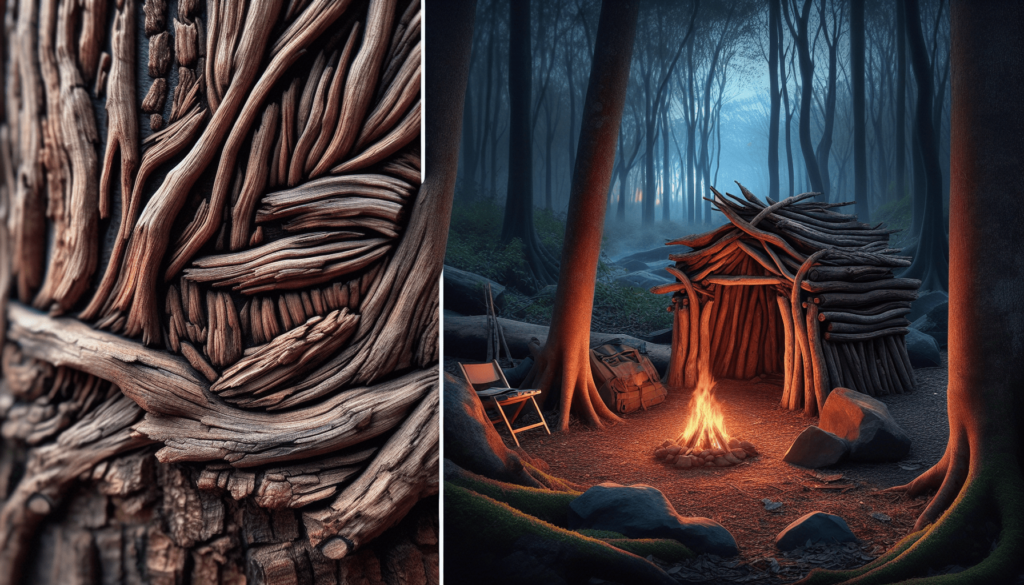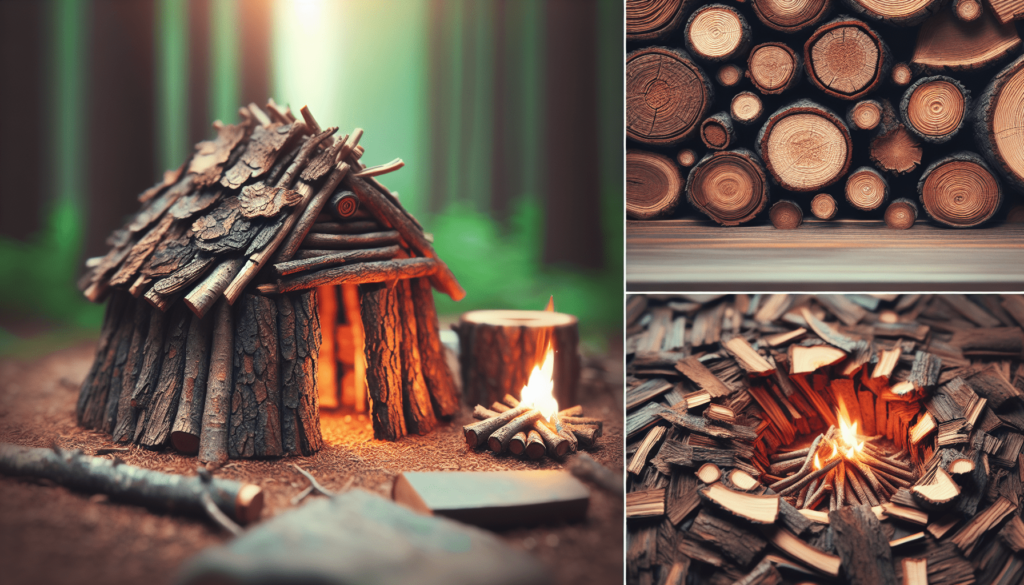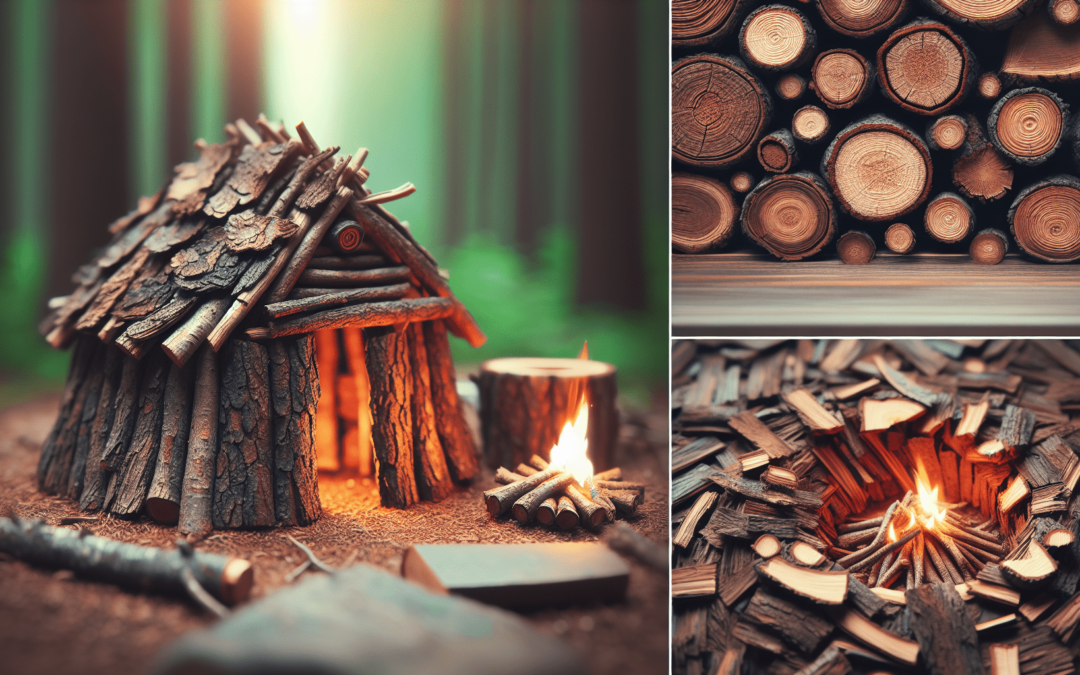Ever wondered how tree bark could be your best friend in a survival situation? In the article “Using Tree Bark for Shelter and Fire Starting,” you’ll discover how this natural resource can help you stay warm and protected when you’re out in the wild. You’ll learn techniques for utilizing various types of bark to create makeshift shelters and efficient fire-starting methods that can make all the difference in an emergency. Let’s explore how you can turn a simple piece of tree bark into a lifesaving tool. Have you ever found yourself in the wild, contemplating how you’d survive a night without your usual conveniences? Knowing how to use resources around you for basic needs is a skill that can turn a daunting experience into an adventure. Today, let’s dive into a key skill that can make a significant difference: using tree bark for shelter and fire starting.
The Importance of Tree Bark in Survival Situations
Understanding how to use tree bark can be not only a life-saving skill but also an enriching way to connect with nature. From building shelter to kindling a fire, tree bark is an incredibly versatile resource.
Why Tree Bark?
Tree bark is an abundant and readily available material in many environments. Here’s why it’s important:
- Accessibility: You’ll find it almost everywhere there’s a tree.
- Versatility: It can be used for both shelter and fire starting.
- Sustainability: Using fallen or dead bark minimizes your impact on the environment.
Types of Tree Bark Suitable for Shelter and Fire Starting
Knowing the different types of tree bark will help you identify the most effective ones for your needs.
Birch Bark
Birch bark is often considered the superstar of survival tree barks. It peels off in convenient strips and is highly combustible, making it perfect for fire starting.
- Uses for Shelter: Birch bark can be layered for waterproof roofing or used as flooring.
- Uses for Fire Starting: Its natural oils make it remarkably easy to ignite, even when wet.
Cedar Bark
Cedar bark has fibrous strips that can be easily peeled off. It’s particularly useful for creating sturdy shelters.
- Uses for Shelter: The fibrous nature makes it ideal for weaving or layering as roofing.
- Uses for Fire Starting: Shredded cedar bark is excellent for creating highly flammable tinder.
Pine Bark
Pine bark, especially from fallen or dead trees, can be quite beneficial.
- Uses for Shelter: Large sheets of pine bark can be used to create solid walls or roofing.
- Uses for Fire Starting: Pine bark is rich in resin, providing a good source of flammable material.
Other Useful Barks
- Oak Bark: Generally not as flammable but can be layered for sturdy shelter.
- Maple Bark: Works well for shelter due to its flexibility.
| Tree Type | Best Use for Shelter | Best Use for Fire Starting |
|---|---|---|
| Birch | Roofing, Flooring | Easy tinder, even when wet |
| Cedar | Weaving, Roofing | Highly flammable tinder |
| Pine | Walls, Roofing | Resin-rich tinder |
| Oak | Sturdy layering | Less flammable |
| Maple | Flexible layering | Average flammability |

Collecting Tree Bark
Collecting tree bark properly is crucial for several reasons, including sustainability and ensuring you have the right kind of bark for your needs.
Ethical Harvesting
When you collect tree bark, make sure:
- You’re not harming living trees: Focus on dead or fallen trees to minimize environmental impact.
- You’re taking only what you need: Over-harvesting can harm the ecosystem.
Tools and Techniques
Tools
- A good knife: For cutting the bark.
- A hatchet: For larger pieces of bark.
- Gloves: To protect your hands.
Techniques
- Identify the Tree Type: Make sure it’s the right kind of tree bark for your intended use.
- Test the Bark: Ensure it peels away easily and isn’t too decayed.
- Cut Vertical Strips: To collect the bark, cutting vertical strips from top to bottom is often most effective.
- Peel Carefully: Use your hands to peel the bark, ensuring you don’t damage the tree if it’s still alive.
Creating Shelter with Tree Bark
Shelter is one of the first necessities in a survival situation. Knowing how to make a shelter using tree bark can shield you from the weather and provide a sense of safety.
Basic Shelter Types
Lean-To Shelter
A lean-to shelter is one of the simplest to make. Here’s how you can build one:
- Find Two Supporting Trees: These will act as the main supports for your shelter.
- Create a Ridgepole: Lay a long pole between the two trees.
- Layer Large Pieces of Bark: Attach strips of bark along the ridgepole, overlapping them to prevent rain from seeping through.
A-Frame Shelter
An A-frame shelter is more stable and can be better at keeping out the elements.
- Find Two Forked Trees: Or use two large sticks to create the frame.
- Build the Frame: Lay a long stick between the two trees or forked sticks, creating an ‘A’ shape.
- Layer Bark: Cover the frame with layers of bark, ensuring each layer overlaps the previous one to create a good seal.
Enhancing Comfort
Insulating the Ground
To insulate the ground, you can use smaller pieces of tree bark. Layer them to create a barrier between you and the cold ground.
Wind Protection
Use larger sheets of bark to build walls around your shelter, providing extra wind protection.

Starting Fire with Tree Bark
Fire provides warmth, a way to cook food, and a means to signal for help. Certain types of tree bark make excellent tinder.
Preparing Tree Bark for Fire Starting
Shredding Bark
- Fibrous Barks: Cedar and birch bark can be shredded easily to create a highly flammable tinder.
- Tools Needed: Use your hands or a knife to shred the bark into fine pieces.
Resin Collection
- Pine Resin: Collect resin from pine trees to improve the bark’s flammability.
Fire Starting Techniques
Using a Ferro Rod
A ferro rod is a reliable tool for igniting shredded bark.
- Prepare your Tinder Bundle: Create a small pile using shredded bark.
- Strike the Ferro Rod: Hold the rod close to the tinder and strike it with a steel striker. The sparks should ignite the tinder.
Using a Bow Drill
For those who prefer primitive methods, a bow drill can also be effective.
- Create a Socket and Spindle: Use a piece of hardwood for the spindle and a softer wood (such as cedar) for the socket.
- Create the Bow: Attach a string to a curved piece of wood.
- Drill to Create an Ember: Rotate the spindle rapidly using the bow drill technique until an ember forms.
- Transfer to Tinder: Carefully place the ember onto your shredded bark and blow gently until it ignites.
Safety Precautions
When using tree bark for shelter or fire starting, safety should always be a priority.
Shelter Safety
- Avoid Fire Hazards: Make sure your shelter is not too close to your fire.
- Structural Integrity: Ensure your shelter is stable and won’t collapse on you.
Fire Safety
- Clear the Area: Remove any flammable material around your fire site.
- Have Water Ready: Always keep a container of water or dirt nearby to extinguish the fire if necessary.
- Never Leave Unattended: Keep an eye on your fire at all times.
Practical Uses Beyond Survival
Apart from survival scenarios, knowing how to use tree bark can be beneficial for camping, hiking, and other outdoor activities.
Camping
- Quick Shelter: Set up a quick shelter in unexpected weather changes.
- Efficient Fire Starting: Use tree bark to quickly start a fire for cooking or warmth.
Hiking
- Emergency Kits: Include pieces of highly flammable bark like birch in your emergency kit.
- Trail Marking: Use tree bark to mark trails or signal directions.
Scouting and Educational Activities
Teaching these skills to young scouts or during educational outings can be both fun and informative.
Conclusion
Using tree bark for shelter and fire starting is a practical and versatile skill that can be life-saving in emergencies and incredibly useful for outdoor enthusiasts. By learning about the various types of tree bark, how to collect it sustainably, and the methods to create shelters and start fires, you can be prepared for any outdoor adventure.
The next time you’re in nature, look around at the trees and their barks. Practice these skills safely and responsibly, and you’ll be well on your way to mastering the art of using tree bark for survival. Happy adventuring!

